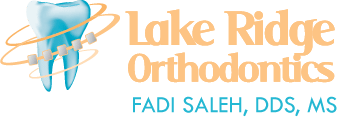Children are always growing. Parents must make sure their growth and development are not hindered due to avoidable dental problems.
Early orthodontic treatment (also known as interceptive treatment) aims to guide your child’s jaw and tooth growth, as well as correct bite and alignment issues before the jaw bones harden completely. Early dental intervention can help accept the child in their image and increase their confidence.
What Is Involved In Early Orthodontic Treatment For Children?
Early orthodontic treatment has three phases:
Phase 1: (Age 2-6 years old)
The goal of early orthodontic treatment is to guide and control the width of both dental arches by creating enough space for the permanent teeth to properly erupt. Children who have difficulty biting properly, lose baby teeth early, whose jaws click or grind during movement, and children who breathe through the mouth (rather than the nose and mouth) are good candidates for early treatment. The types of equipment used in this phase are:
- Headgear
- Functional appliances
- Limited phase of braces (selected teeth)
- Specialized retainers
- Space maintainers
Phase 2: (Age 6-12 years old)
Crooked teeth, spacing, and improper bites may linger after Phase I treatment. The orthodontist can take advantage of this development by timing the second phase of treatment with your child’s growth. Braces or Invisalign can be used during Phase 2 to straighten permanent teeth and align the bite and jaw. The child will be able to speak, eat, and chew normally regardless of the appliance. Children who wear fixed dental appliances should take extra care to maintain a daily oral hygiene routine to reduce the risk of staining, and decay.
Phase 3: (Age 13+ years old)
Straightening permanent teeth and improving the smile’s appearance are two of the main goals of Phase 3 Early orthodontic treatment. During this time, the dentist will most likely provide fixed or removable braces to steadily straighten the teeth. Following the completion of orthodontic treatment, the teenager may be required to wear a retainer to prevent the teeth from reverting to their original alignment.
Signs That Mean It Is Time To See An Orthodontist
While parents may understand the importance of orthodontic evaluation for children, they may be unaware of the signs that indicate immediate orthodontic attention for children. An early evaluation will help you identify potential problems and catch them in their early stages, preparing you and your child for treatment shortly. Here are five common indicators that your child requires orthodontic treatment.
Open Mouth Most Of The Time
There are many reasons why a child may keep their mouth open most of the time. They can have the habit of breathing through their mouth or have nasal issues which force them to do so. The child’s tongue should be resting on the roof of the mouth for the teeth, jaws and entire face to develop properly. If the lips are slightly apart or the mouth is open, the tongue will not rest on the roof of the mouth. This will result in long, narrow faces, receding chins, flat cheeks, and small, narrow jaws with insufficient space for all adult teeth.
Crooked Or Crowded Teeth
Teeth crowding occurs when the jaw does not have enough space to accommodate all of the teeth. Crowding makes teeth appear uneven, slanted, and twisted. They may even cause the teeth to appear overlapping in front of or behind each other. This can make it difficult for them to brush or floss, contributing to plaque buildup. This leads to tooth decay, gum disease, bad breath, and bone loss around teeth.
Protruding Front Teeth
A child’s front can stick out due to various reasons like sucking the thumb, unintentionally pushing teeth by the tongue, etc. Protruding teeth are more likely to be injured b falling and other accidents. It is beneficial to stick the teeth back and prevent protrusion
Overbite
An overbite occurs when the upper teeth are too far forward to the lower teeth in a child. When the space is too large, it can cause jaw pain, chewing difficulties, uneven wear, and make the front teeth more vulnerable to injury. A minor overbite or one caused by tooth position rather than jaw position may not necessitate phase 1 orthodontic treatment.
Underbite
Underbite occurs when the lower teeth are in front of the top teeth. An underbite is skeletal. Early detection is critical to avoiding the need for corrective jaw surgery and extensive treatment later in life. An untreated underbite can cause chewing problems, uneven wear, jaw pain, facial imbalance, and other problems.
Crossbite
A crossbite occurs when your teeth do not line up properly when you close your mouth. Upper teeth are typically wider and sit on the outside of lower teeth. Each upper tooth touches the matching lower tooth, distributing the force of chewing or clenching evenly throughout your mouth. These movements may cause irregular wear and damage to your teeth if you have a crossbite. Crossbites could be the result of habits, tooth growth delays, bone structure issues, upper airway issues, or genetics.
Difficulty In Speaking
Sometimes teeth alignment issues are a cause of your child’s speech development issues. While neural or social development problems are much more severe, it is beneficial to check their dental health too. Early orthodontic treatment can assist your child in developing a symmetrical face as they grow older.
Spacing Between Teeth
Unusually large gaps between teeth can cause difficulty in making certain sounds for your child. Spacing can also lead to decay, gum disease, and deterioration of jawbones supporting those teeth.
Find A Good Orthodontist Near You
When searching for a good orthodontist always make sure to look for an expert in their field. Ask your family, friends, and community members for recommendations. Google the best orthodontists in your area.
The orthodontists at Lakeridge Ortho are the best you can find in Woodbridge, VA. Our wide variety of services will surely cater to all your dental needs. Contact us to know more and book your appointment.

